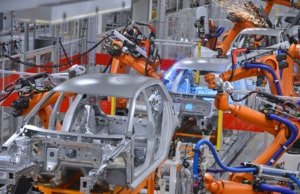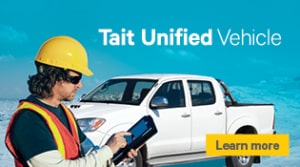Change is constant and this has never been more relevant to the world of communications. We asked Kevin Golding, Applications Manager at South Midlands Communications (SMC) in the UK about his perspective on recent trends in the mobile radio and critical communications community. He shares insight into expanded industry capabilities and current customer demands. With new applications that come into play, customers’ imagination is the only limit as anything is becoming possible.
The following article is from the latest issue of Connection Magazine.
It is clear to see that the communications world is changing rapidly. However, what our customers are looking for has changed very little. They still want the best possible communications solution that they can afford. The big changes are in how we deliver those solutions, and how much more complex and innovative those solutions can be now, without being prohibitively expensive.
Not long ago, our customers shied away from any type of integration, because they knew it was going to be expensive. The good news is that in the last three or four years, integration has become a lot less costly, so we really need a mindset change in the industry.
No longer can we operate in silos, believing that our system is all our customers are using for their critical comms. Equally though, no longer should network operators shy away from incorporating other technologies because they believe that complexity equals cost. Today’s radio network is just one element of the communication solution, and it must integrate seamlessly with all the other technologies in use. This change is happening fast, as different technologies become both more accessible and more affordable.

The communication industry is already impacted by the availability of IoT equipment, and that impact is set to increase rapidly. Right now, IoT is largely consumer-driven and lacks the robustness needed for critical communications. For instance, when a customer wants to read a meter 10 miles away, across a field, radio is still the best choice. Cellular is available but is not sufficiently reliable. An IoT company may offer a low-cost solution, but as yet, it is likely to be even less reliable than cellular.
When we are seeking that perfect combination of affordability and quality, an essential ingredient is standards. Across a communications network, the various technologies and devices can only talk to each other by using similar protocols and standard interfaces which have been defined and understood, implemented and tested by all parties. In the past, closed protocols meant that equipment manufacturers would work with only one or two other vendors. That doesn’t offer customers a good solution, because it reduces their choice of equipment supplier, and potentially, increases cost.
Open protocols give customers flexibility and avoid vendor lock-in. So while some manufacturers still promote closed protocols – and it may seem less expensive initially – it is rarely in the customer’s long-term best interests. Undoubtedly, we are getting more open with protocols, but there is still plenty of work to do in this area.
Customers are beginning to realise that they can now do a lot more with their comms network than they could previously – in fact, more than they ever imagined. And we are really only at the beginning of what they might ask for. Already, we are involved in many different and exciting projects.

‘Today’s radio network is just one element of the communication solution, and it must integrate seamlessly with all the other technologies in use.’
Some Examples:
- At a UK airport, the radio system is integrated with the airport database to automatically allocate jobs to coaches based on flight information. That would have been an enormous project a decade ago, but now it’s relatively easy and affordable because standards mean you can mix the technologies.
- By combining analog signalling over a marine radio with DMR Tier 3 digital trunked systems, operators can control marine radios hundreds of miles away. That mix of old-fashioned VHF marine technology with new DMR Tier 3 trunked puts voice over DMR then re-transmits over marine radio. In the past, that would have been too expensive to consider, but now it’s possible. And it’s not just voice. We support full DSC data on marine radio, relaying ship-to-ship information many hundreds of miles out at sea, back to shore.
- Many integration projects now pick up events and alarms and alerts from various systems, from fire alarms to burglar alarms, and process them via a single control system.
- In a car manufacturer spray paint department, we monitor the paint levels in every pot and send that information over the radio – this prevents the chassis being spoiled by splatter. We also monitor weight sensors on each corner of every vehicle chassis on the conveyor carrier as they go round the factory. If they become unbalanced, an alert via radio lets workers know that a particular carrier has an issue.
- This innovation is particularly interesting because it required absolutely no changes to the factory’s building automation software or processes. The controlling Windows PC prints to a virtual printer using its normal software, and the radio system acts as the virtual printer, forwarding the alerts to the display on the radio as a text message.
- Intergrating a keyboard with a radio in a vehicle means users are no longer restricted to the buttons on the front of a radio itself; you can now plug a traditional USB keyboard into the back of a Tait Unified Vehicle radio using AppBuilder.
There’s virtually nothing that can’t be achieved now. The key thing is that vendors, integrators, customers and end users must all re-evaluate the restrictions they have in their minds because it’s all changed.
But in the end, it all comes back to a really old-fashioned idea – old-school conversations with every one of our customers about what they need and what they want. We must encourage them to look over the fence, beyond their own industry borders, to let their imaginations to run wild, to be brave with their ideas, and not let perceived ideas about cost stand in their way.
Those old barriers are gone now.
Click here to read more about our mobile applications platform, Tait Unified Vehicle.
Read more of the latest issue of Connection Magazine online, or subscribe today to receive new issues of Connection as they’re released, along with other informative content from Tait.





